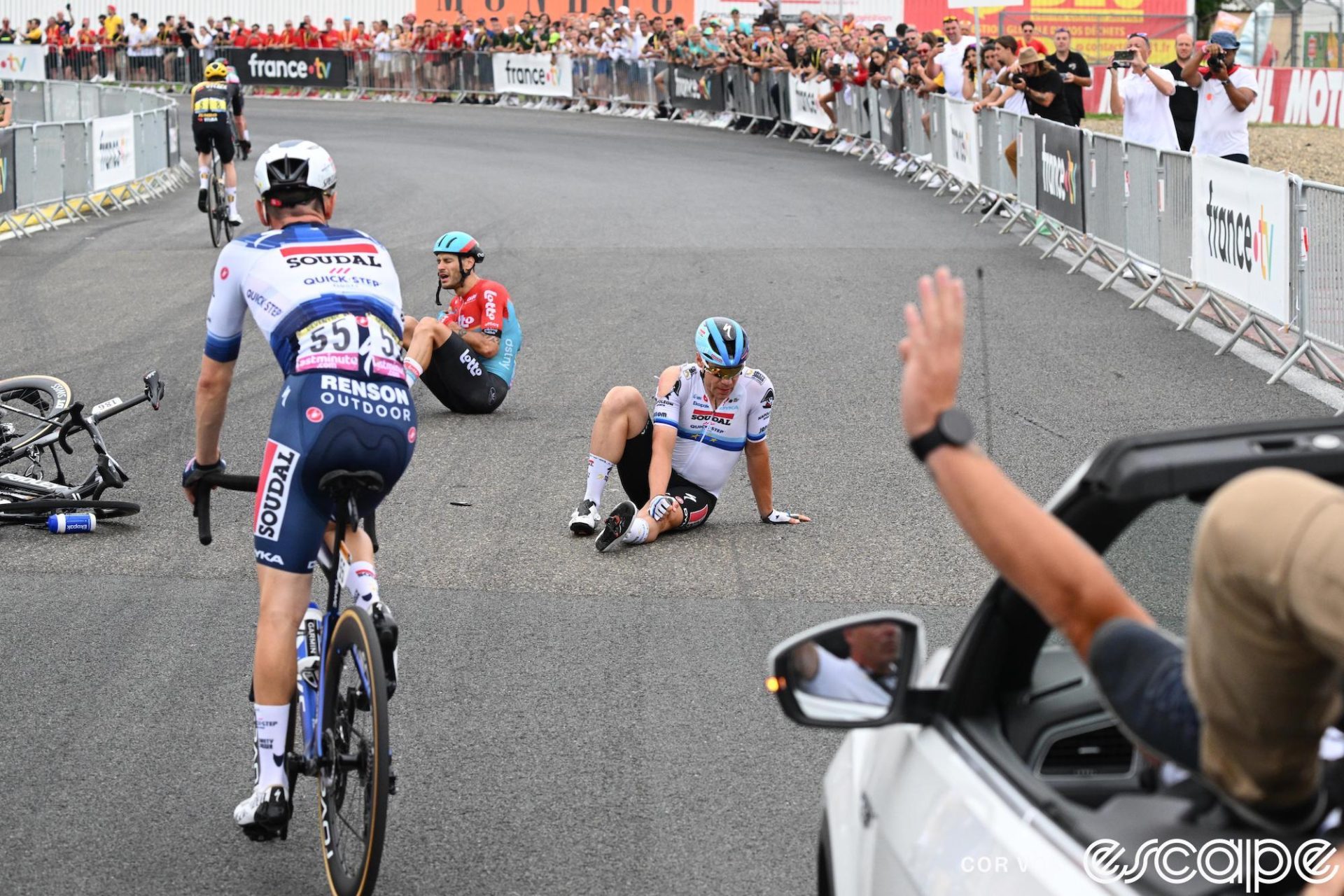Søren Wærenskjold clickety clacked in his racing shoes through the bus paddock trailed by Norwegian television, the side of his shorts flapping open, other riders whizzing by. His bike followed a few minutes later, slung over the back of an Uno-X mechanic with bits hanging off that are not supposed to hang.
He was not alone. Fabio Jakobsen, a favorite for the stage win, went down hard. Jacopo Guarnieri did too; his arm dripped blood at the bus. Luis Leon Sanchez, who has stepped into Mark Cavendish’s leadout, fell particularly heavily and was taken to the hospital. Stage 4’s finishing circuit on the Nogaro motor circuit ended three days of relative calm on that front, despite those earlier stages covering tricky descents and roundabout-filled finales. On paper, today was the safe day. And yet it wasn’t.
“None of us are used to finishing on such a wide course, the entrance which is pretty small, then big lanes again,” Jasper de Buyst said after the finish. “These kind of corners, everybody can keep pedalling and you can just take them 10 next to each other. In the end it’s like having a long straight but even more dangerous.”
De Buyst, part of Caleb Ewan’s leadout, is still strapped up from a tumble on stage 1. He is careful not to blame organizers – crashes happen. They will always happen. Sprinters and their leadout men, more so than any other type of racer, need to be at peace with this fact, because thinking too much about it would make the job impossible.

Still, it’s counterintuitive that easier finishes can also be more dangerous finishes. De Buyst explains:
“Sometimes people think the wider we make the roads and the more we go on circuits and whatever, the safer it becomes. But today we see the opposite. I think sometimes what makes it more safe is when you stretch out the bunch, like yesterday for example with the U-turn. Then the bunch gets stretched out, and from there on everybody keeps his position or kind of keeps his position, and then you get safer sprints.”
Other sprinters polled agreed. Philipsen, the winner of the first two sprint stages, added that the low pace all day – “the most boring Tour de France stage since a long time,” he called it – didn’t help either. “Everybody was very fresh in the end. That made it even more noticeable.”
Boiled down, most crashes are caused by passing. That can be a whole peloton passing a spent leadout man or one sprinter trying to make a late pass on another. As riders shuffle around each other, wheels overlap, handlebars touch, shoulders rub.
Nogaro’s wide corners allowed riders to pass at almost any point and the day’s slow pace meant more riders had the legs to do so. The Tour peloton is used to squeezing through gaps and avoiding road furniture; it’s not used to pedaling around corners six wide. Throw in a bit of bad luck and the dominoes begin to tumble.
A handy reminder that what is often safest in pro cycling is not the simple, but the familiar and, oddly, the demanding.
What did you think of this story?

